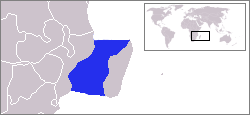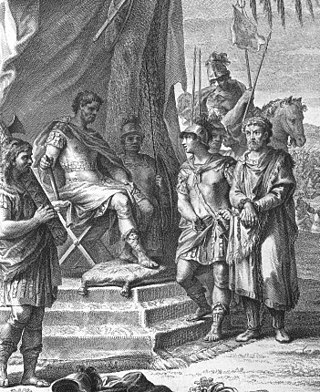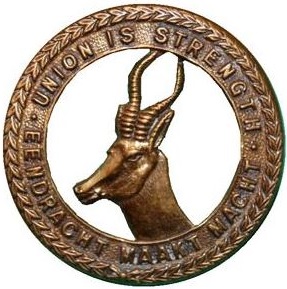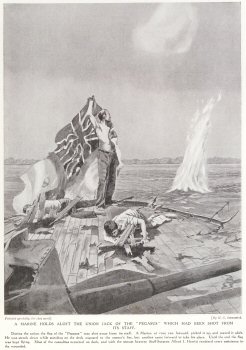
The Mozambique Channel is an arm of the Indian Ocean located between the Southeast African countries of Madagascar and Mozambique. The channel is about 1,700 km long and 419 km across at its narrowest point, and reaches a depth of 3,292 m (10,801 ft) about 230 km off the coast of Mozambique. A warm current, the Mozambique Current, flows in a southward direction in the channel, leading into the Agulhas Current off the east coast of Southern Africa.

The Second Boer War, also known as the Boer War, the Anglo–Boer War, or the South African War, was a conflict fought between the British Empire and the two Boer Republics over the Empire's influence in Southern Africa from 1899 to 1902.

The Encyclopædia Britannica Eleventh Edition (1910–1911) is a 29-volume reference work, an edition of the Encyclopædia Britannica. It was developed during the encyclopaedia's transition from a British to an American publication. Some of its articles were written by the best-known scholars of the time. This edition of the encyclopaedia, containing 40,000 entries, has entered the public domain and is readily available on the Internet. Its use in modern scholarship and as a reliable source has been deemed problematic due to the outdated nature of some of its content. Modern scholars have deemed some articles as cultural artifacts of the 19th and early 20th centuries.

Jugurtha or Jugurthen was a king of Numidia. When the Numidian king Micipsa, who had adopted Jugurtha, died in 118 BC, Jugurtha and his two adoptive brothers, Hiempsal and Adherbal, succeeded him. Jugurtha arranged to have Hiempsal killed and, after a civil war, defeated and killed Adherbal in 112 BC.

The Orange Free State was an independent Boer sovereign republic under British suzerainty in Southern Africa during the second half of the 19th century, which ceased to exist after it was defeated and surrendered to the British Empire at the end of the Second Boer War in 1902. It is one of the three historical precursors to the present-day Free State province.

German East Africa was a German colony in the African Great Lakes region, which included present-day Burundi, Rwanda, the Tanzania mainland, and the Kionga Triangle, a small region later incorporated into Mozambique. GEA's area was 994,996 km2 (384,170 sq mi), which was nearly three times the area of present-day Germany and almost double the area of metropolitan Germany at the time.

The South West Africa campaign was the conquest and occupation of German South West Africa by forces from the Union of South Africa acting on behalf of the British imperial government at the beginning of the First World War.

The Battle of Mons was the first major action of the British Expeditionary Force (BEF) in the First World War. It was a subsidiary action of the Battle of the Frontiers, in which the Allies clashed with Germany on the French borders. At Mons, the British Army attempted to hold the line of the Mons–Condé Canal against the advancing German 1st Army. Although the British fought well and inflicted disproportionate casualties on the numerically superior Germans, they were eventually forced to retreat due both to the greater strength of the Germans and the sudden retreat of the French Fifth Army, which exposed the British right flank. Though initially planned as a simple tactical withdrawal and executed in good order, the British retreat from Mons lasted for two weeks and took the BEF to the outskirts of Paris before it counter-attacked in concert with the French, at the Battle of the Marne.

Unitarianists or Unitarians were the proponents of the concept of a unitary state in Buenos Aires during the civil wars that shortly followed the Declaration of Independence of Argentina in 1816. They were opposed to the Argentine Federalists, who wanted a federation of autonomous provinces. Argentine unitarianism was an ideologic grouping, not a religious one. As such, it is unrelated to religious Unitarianism.

The East African campaign in World War I was a series of battles and guerrilla actions, which started in German East Africa (GEA) and spread to portions of Mozambique, Rhodesia, British East Africa, the Uganda, and the Belgian Congo. The campaign all but ended in German East Africa in November 1917 when the Germans entered Mozambique and continued the campaign living off Portuguese supplies.

The South African Overseas Expeditionary Force (SAOEF) was a volunteer military organisation in World War I.

The Battle of Salaita Hill was the first large-scale engagement of the East African Campaign of the First World War to involve British, Indian, Rhodesian, and South African troops. The battle took place on February 12, 1916, as part of the three-pronged offensive into German East Africa launched by General Jan Smuts, who had been given overall command of the Allied forces in the region.
The Battle of Latema Nek was a battle of the East African Campaign in World War I.
White Africans of European ancestry or Euro-Africans refers to people in Africa who can trace full or partial ancestry to Europe. In 1989, there were an estimated 4.6 million white people with European ancestry on the African continent.

The Battle of Ngomano or Negomano was fought between Germany and Portugal during the East African Campaign of World War I. A force of Germans and Askaris under Paul Emil von Lettow-Vorbeck had recently won a costly victory against the British at the Battle of Mahiwa, in present-day Tanzania and ran very short of food and other supplies. As a consequence, the Germans invaded Portuguese East Africa to the south, both to supply themselves with captured Portuguese materiel and escape superior British forces to the north.
The Battle of Kahe was fought during the East African Campaign of World War I. It was the last action between German and Entente forces before the German retreat from the Kilimanjaro area. British and South African forces surrounded German positions at Kahe, south of Mount Kilimanjaro. Entente forces inflicted heavy casualties and captured large German artillery pieces while receiving comparably little casualties. German forces retreated from there, further into the interior of the colony.
The Battle of Behobeho was fought during the East African Campaign of World War I.

The Battle of Zanzibar was an encounter between the German Kaiserliche Marine and the British Royal Navy early in the First World War. While taking on coal in the delta of the Rufiji River in German East Africa, the German cruiser SMS Königsberg learned that a British cruiser, HMS Pegasus, which had been part of the Royal Navy's Cape Squadron sent to counter Königsberg, had put in at Zanzibar for repairs. Königsberg's captain, Commander Max Looff, decided to attack Pegasus while she was in port.

German South West Africa was a colony of the German Empire from 1884 until 1915, though Germany did not officially recognise its loss of this territory until the 1919 Treaty of Versailles.

Artillery Memorial, Cape Town was erected in memory of the gunners who fought for South Africa during World War I. The memorial, which forms part of the Delville Wood Memorial, is located in the Company's Garden, Cape Town, and was strategically established to commemorate South Africa's artillery soldiers who fell in battle. Of those who volunteered to fight during the war, 5800 were white South African, amongst whom 15% were Dutch and 85% English. An estimated 2536 of these men were killed in the Deville Wood battle in Europe. The Artillery Memorial, an authentic cannon facing east towards the National Gallery, proudly honors South Africa's heavy artillerymen. Inscribed on it are the names of the officers, N.C.O.'s and men of the South African artillery who fell in the Great War (1914–1918).














